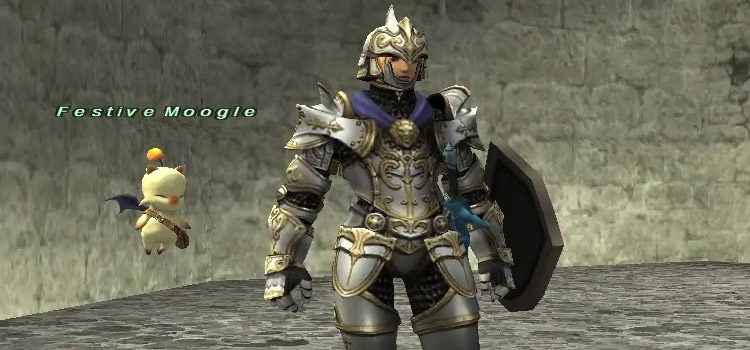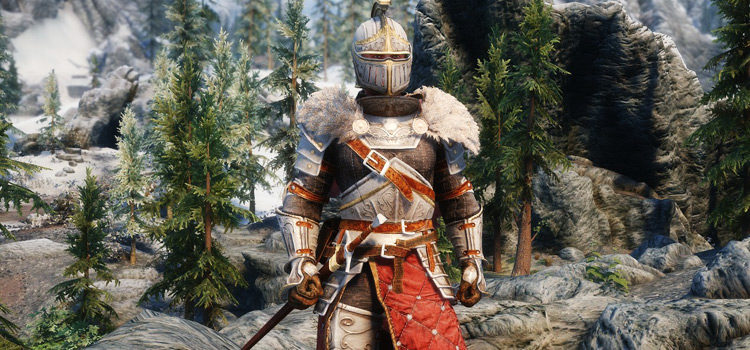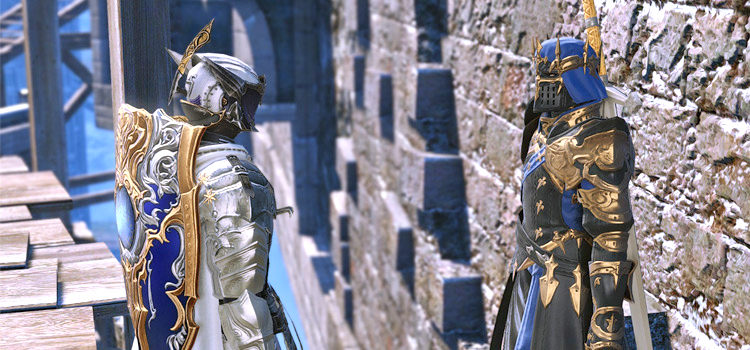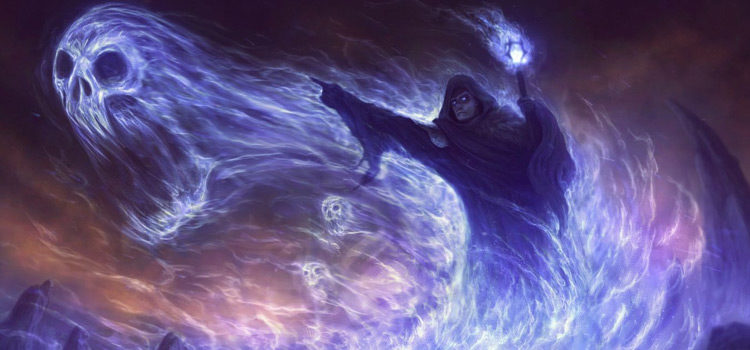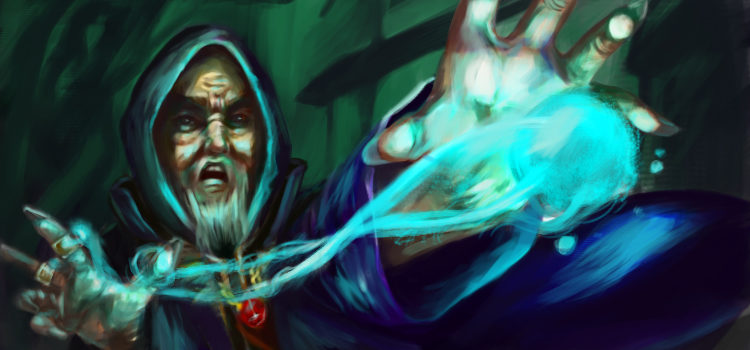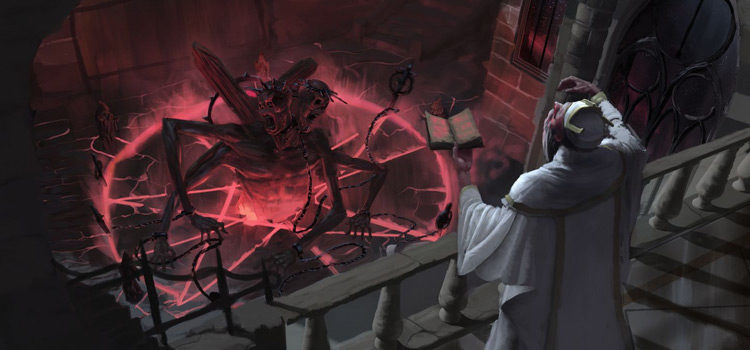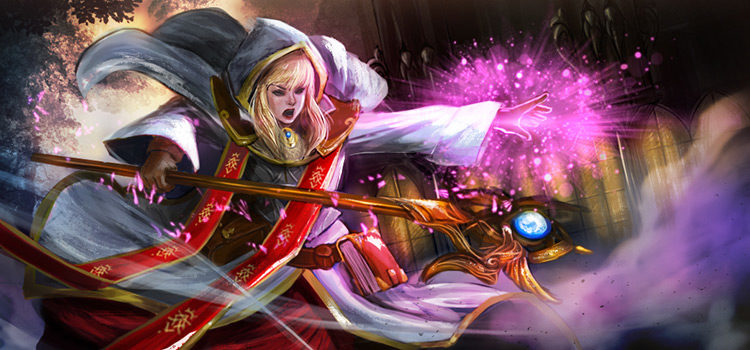20 Best Paladin Spells For D&D 5e (Ranked)
This post may contain affiliate links. If you buy something we may get a small commission at no extra cost to you. (Learn more).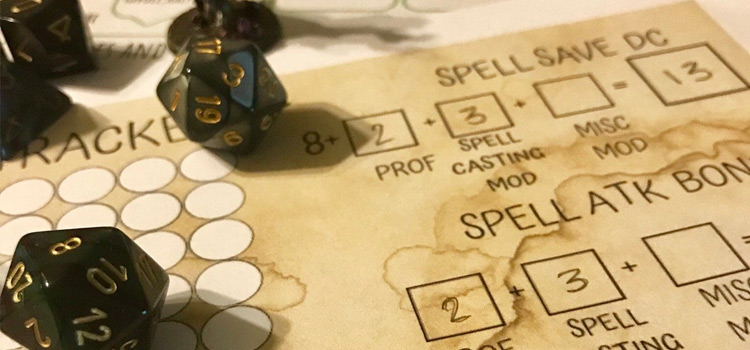
In Dungeons & Dragons 5th Edition, Paladins can access useful divine spells.
Though only half-casters (meaning they can only cast up to 5th-level spells at best) Paladins can prepare a limited number of spells per day that they can cast using their available slots.
Many of their options involve bolstering themselves or their allies, though a few enable them to deal even more damage in combat—directly and indirectly.
However, Paladins’ spell slots compete with their signature feature: Divine Smite, which trades in spell slots for powerful bursts of radiant damage. So casting a spell versus using it to smite often feels like a managing act to get the most out of a Paladin’s limited resources.
Overall, Paladins make for fantastic martial characters. And I’ve played a fair number of them with different builds.
My list here emphasizes choices that allow Paladins to provide buffs and some magical support.*
*NOTE: Spell levels mentioned here refer to the minimum spell slot level needed to cast that spell. And I’ll only cover spells on the Paladin’s base spell list (discounting any possible oath spells).
20. Magic Weapon
Source: Player’s Handbook
Paladins gain access to this 2nd-level spell around the time they also get their Extra Attack feature.
Magic weapon buffs a given weapon with a +1 to attack and damage rolls.
Considering many creatures have resistance to nonmagical weapon damage (meaning they take only half damage from such sources), this spell can bypass those defenses.
Until your Paladin has a magical weapon, you’ll want to keep this spell prepared. Just in case you face an enemy that scoffs at mundane damage sources.
19. Thunderous Smite
Source: Player’s Handbook
After casting thunderous smite, you deal an additional 2d6 thunder damage the next time you hit a creature with a melee weapon attack.
What makes this spell worth the 1st-level slot (which you could otherwise use for Divine Smite) are the additional effects: you can push the creature you hit 10 feet away from you and knock them prone.
But note that the spell generates an extremely loud noise when you hit. So it’s not apt for any situations requiring subtlety.
18. Destructive Wave
Source: Player’s Handbook
Most Paladins don’t have innate blasting options with their spells.
However once they access 5th-level spells (the highest-level spells Paladins can cast), they can finally use destructive wave.
This affects all creatures of your choice within 30 feet of you. Targeted creatures must make a Constitution save against a whopping 5d6 thunder damage and 5d6 of either radiant or necrotic damage, as well as to avoid being knocked prone.
It takes a while for Paladins to get destructive wave. But it helps shore up their weakness at effectively dealing with large numbers of enemies simultaneously.
17. Aid
Source: Player’s Handbook
This 2nd-level spell grants up to three creatures with bonus hit points (HP).
At the lowest level you can cast it, aid increases targets’ current and maximum HP by 5, and casting the spell with higher level slots increases this extra HP by 5.
It’s a very straightforward buff that lasts for up to 8 hours, without taking up your concentration.
16. Command
Source: Player’s Handbook
This 1st-level spell allows you to issue a single-word command to another creature.
If that target fails their Wisdom save, they must do their best to follow your order for a round.
Considering how Paladins don’t get many crowd control options that can outright nullify an enemy’s action, command provides an early option in that regard.
This spell’s description provides some examples of words that you can use, though creative wording with Command can lead to more possibilities.
15. Banishment
Source: Player’s Handbook
As mentioned before, Paladins have few ways to disable enemies short of dealing damage to them.
Yet Banishment, a potent 4th-level spell, can remove a creature from play—possibly permanently if targeting an extraplanar creature.
Though the spell slot cost can be hefty (for a Paladin a 4th-level spell slot maxes out their Divine Smite damage), banishment requiring a Charisma saving throw can make the spell highly effective. Since many creatures often have lower values for that particular save bonus.
14. Blinding Smite
Source: Player’s Handbook
Paladins get a fair number of great 3rd-level spell options.
Blinding Smite works similarly to thunderous smite; however, blinding smite grants an additional 3d8 radiant damage on a hit, and its special effect blinds the creature you attacked for up to a minute if they fail the Constitution saving throw.
Blindness is a potent condition to inflict on an enemy, making this spell a great pick.
13. Compelled Duel
Source: Player’s Handbook
Another great 1st-level spell choice, Compelled Duel targets a single creature within 30 feet of you.
On a failed Wisdom saving throw, your target has disadvantage to attack creatures other than you for up to a minute.
And it also has trouble moving away from you.
Apropos of the name, your Paladin can only attack the spell’s target, and your allies can’t cause harm to your target either. Otherwise, the effects of compelled duel ends.
And it only takes a bonus action to cast this spell. So you can spend your action focusing on your target, too.
12. Heroism
Source: Player’s Handbook
This 1st-level concentration spell grants two notable buffs for 1 minute.
One, the target becomes immune to the frightened condition.
Two, the target also gains an amount of temporary HP equal to your Paladin’s Charisma modifier, which then refreshes at the start of each of the target’s turns.
While in combat, heroism can provide an amount of temp HP that’s very efficient for the spell slot you spend, so long as you stay in combat for more than just two or three rounds at least.
11. Death Ward
Source: Player’s Handbook
An unkillable Paladin is often the most terrifying one.
Death ward, a 4th-level spell, gives a non-concentration 8-hour buff to a single target, which helps protect it from possible death.
Specifically, the spell prevents the target from going down to 0 from taking damage, instead reducing them to 1 hit point before ending.
And while death ward persists, a creature affected by the spell can’t be killed by effects, like spells or special abilities that can cause instantaneous death.
This benefit can prove especially value at higher levels of play, but it’s nonetheless a potent assurance to your Paladin’s general survivability.
10. Holy Weapon
Source: Xanathar’s Guide to Everything
As a 5th-level spell, holy weapon is an aptly potent choice for Paladins.
For up to an hour, you imbue holy energy into you weapon, which allows you to deal an extra 2d8 radiant damage each time you hit with it.
The weapon also emits light for this duration.
You can choose to dismiss the spell early, causing a burst that deals additional radiant damage and blinds creatures of your choice within a 30-foot radius.
You’re likely to maintain this spell for as long as possible, rather than dismiss it, since it provides a significant boost to your damage each round.
9. Protection from Evil and Good
Source: Player’s Handbook
A powerful 1st-level spell choice, protection from evil and good gives any target a significant buff against the following:
- Aberrations
- Celestials
- Elementals
- Fiends
- Fey
- Undead
And for up to 10 minutes, a target protected by this spell can’t be possessed, charmed or frightened by creatures of those subtypes.
Plus, those creatures are at a disadvantage to attack the target.
Overall, protection from evil and good gives some very potent advantages for those specific types of enemies.
The only downside to this spell is that it consumes holy water or powdered silver as a casting component.
8. Divine Favor
Source: Player’s Handbook
A very reliable 1st-level spell choice, divine favor allows Paladins to add a d4 of radiant damage to their damage rolls for weapon attacks.
This spell takes only a bonus action to cast, and lasts for up to a minute.
Early on, divine favor gives any Paladin a decent and straightforward offensive buff. And it works even better once your character can attack multiple times per turn!
7. Revivify
Source: Player’s Handbook
This notable 3rd-level spell allows you to resurrect a recently deceased creature with a touch.
There are a few requirements here, though:
- You must have a diamond worth 300 gp that gets consumed as part of the casting
- The targeted creature can’t have died more than a minute before you use this spell on it, and its corpse couldn’t have lost any vital body parts (like its head).
Thematically, a single casting of revivify gives your Paladin some measure of control over death, which makes for a cool concept overall.
6. Crusader’s Mantle
Source: Player’s Handbook
Here’s a 3rd-level spell that creates a 30-foot radius aura around your Paladin.
The effects are like that of divine favor’s—for up to a minute, each nonhostile creature in your aura (including you) deals 1d4 extra radiant damage each time you hit with a weapon attack.
The improvement in this effect lies in spreading the offensive buff to your team, and becomes especially valuable if your party has a few characters that rely on weapon attacks.
5. Aura of Vitality
Source: Player’s Handbook
Aura of Vitality is a 3rd-level spell that generates a healing aura around your Paladin.
For the next minute, you can spend a bonus action each round to heal another creature within 30 feet of your character for 2d6 HP.
Now for a single 3rd-level slot, aura of vitality restores a generous amount of HP and proves particularly effective for healing outside of combat. Worth checking out for sure.
4. Wrathful Smite
Source: Player’s Handbook
Wrathful Smite lets you spend a 1st-level spell slot to empower your next successful melee weapon attack, dealing an additional 1d6 psychic damage and forcing the targeted creature to save against being frightened by you.
Whether an oversight or simply an intended mechanic, wrathful smite has a potent persistent effect that can be punishing to remove.
To end this spell’s frightened condition, a creature must spend an action (a very good cost to impose on an enemy) to attempt to end the spell.
The creature must make a Wisdom *check*—not only are Wisdom checks typically lower, if not the same as Wisdom saves. However if you remain in sight of the frightened creature, they make the check with disadvantage, which ultimately helps keep the condition on your target.
3. Shield of Faith
Source: Player’s Handbook
This great 1st-level spell provides your given target with a +2 bonus to Armor Class for up to an hour.
Shield of faith makes for a particularly nice buff to frontline combatants, and Paladins—with their Divine Smite requiring melee attacks—often number among them.
Furthermore, the bonus action casting time for shield of faith allows you to apply it, and in the same turn, wade into the frontline to spend your action attacking.
2. Bless
Source: Player’s Handbook
For a 1st-level spell slot, your Paladin can provide up to three creatures with a d4 to add to their attack rolls and saving throws.
There are only a handful of effects that provide such direct bonuses to those rolls, so bless remains one of the most potent and resource efficient buffs in the game.
And you can also cast bless using a higher-level slot, allowing you to target an additional creature per spell level above 1st.
Since bless takes an action to cast, you can optimize using this spell by casting it just before a fight.
1. Find Steed/Find Greater Steed
Source: Player’s Handbook/Xanathar’s Guide to Everything
Along with the aura spell, the find steed (2nd-level) and find greater steed (4th-level) spells are among the Paladin’s most iconic spells.
Both spells summon a loyal, sapient mount that follows the Paladin’s orders, from transporting them across the land to charging them into battle.
The creature you summon can vary in appearance, which also brings in different abilities to your party.
The 2nd-level version summons a mount that can be as powerful as a war horse.
However the 4th-level version allows your mount to take on an even more powerful form, such as a griffon or a pegasus.
Unless your Paladin dismisses your “steed,” the supernatural mount stays with you for as long as they don’t lose all their HP, making them an effectively permanent companion during your adventures.
Overall, these mounts can prove extremely useful both in & out of combat.
